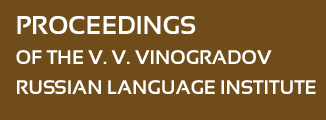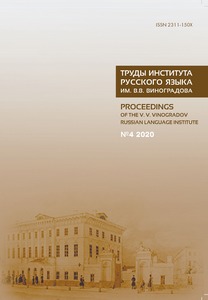LOTS OF GOOD AND DIFFERENT ONES: ON THE ISSUE OF REGIONAL VARIETIES OF STANDARD PRONUNCIATION
Abstract:
The article addresses the conceptual framework for describing a standard language as a system of geographically distributed variants with a common centre — the national standard variant. The methodology under discussion was developed and eff ectively implemented for the sociophonetic analysis of the English language in the United King dom. Research conducted by British sociolinguists elucidates how the national stan dard — Received Pronunciation (RP) — serves as a referential anchor for delineating the differential features across socially stratified types of pronunciation endemic to various geographical regions. Concurrently, the national standard functions as a benchmark for characterizing regional variation in pronunciation among diverse social strata, including the pronunciation patterns of educated speakers who adhere to grammatical and lexical norms in their quotidian linguistic practices. This type of pronunciation, which diverges in certain respects from RP yet eschews many region-specific features, is conceptual ized as a regional variant of “educated speech” or, within the terminological framework of Russian linguistics, a regional variant of literary (or standard) pronunciation. Pronun ciation variants associated with this type, as opposed to other regionally confined variants, are incorporated into (some) pronunciation dictionaries with specific annotations.
To identify the differential features of a given type of pronunciation, a standardized list of pronunciation word-models based on Received Pronunciation (RP) is employed. Each model comprises a group of words containing the same phonetic segment, which varies on a regional or social level. The variability in the realization of these models across different socially or regionally restricted types of pronunciation is evaluated in terms of the nature and character of the differences. This encompasses diff erences in the allophonic realisation of a single phoneme within the model, phonological differences, phonotactic constraints, and variations in the phonetic realization of individual lexemes within the model. The classification of a particular phonetic realization of a word as belonging to a regional variant of literary pronunciation is determined both by the nature of the variation and the evaluative perceptions of this variant by the language speakers in the region.


